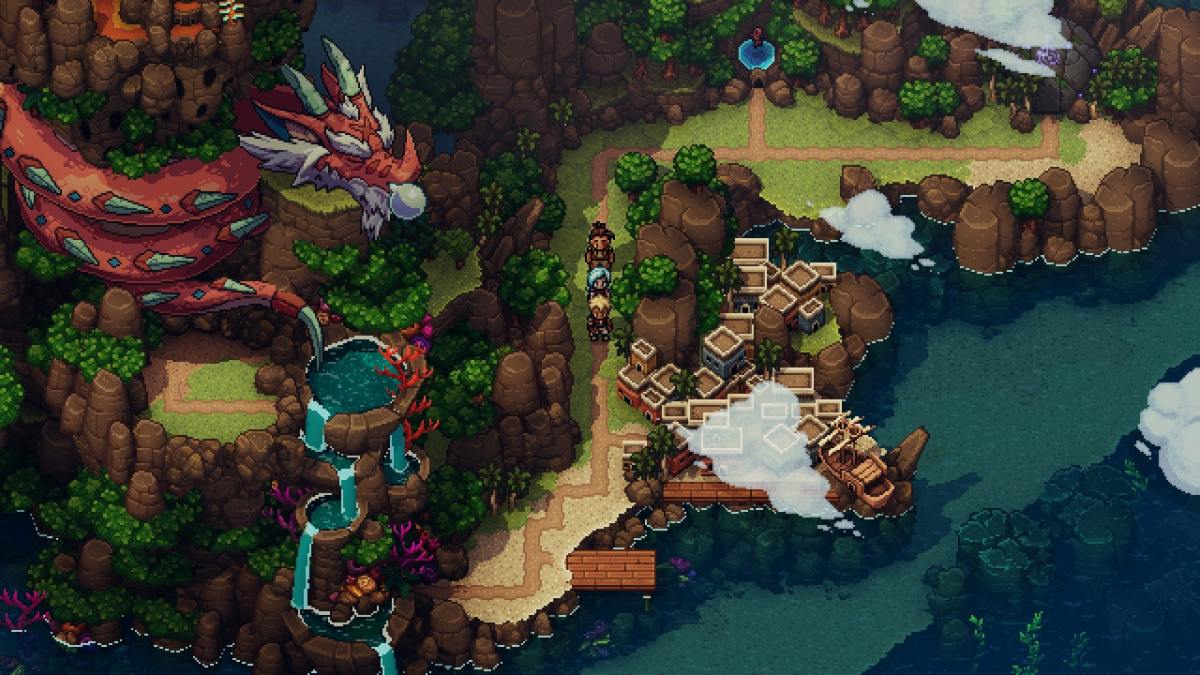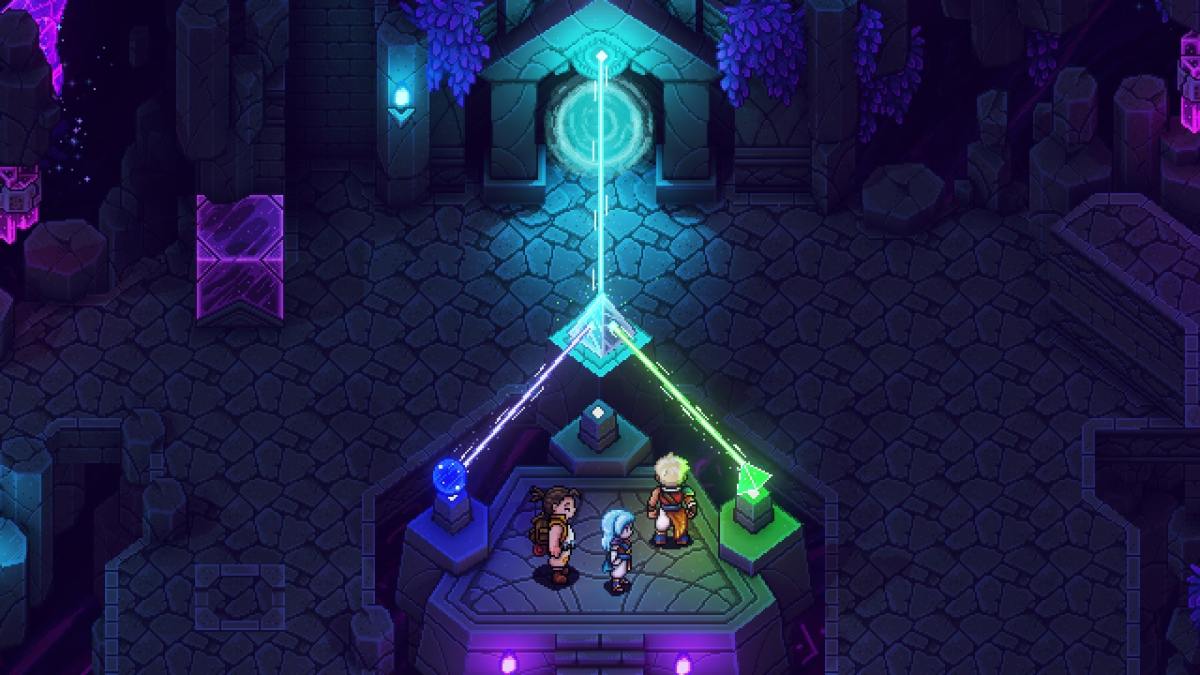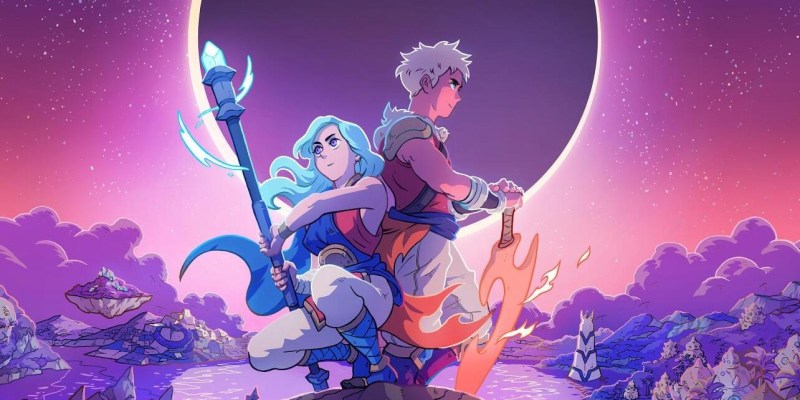By now you’ve likely heard about Sabotage Studio’s Sea of Stars. We covered the demo when it first released on Nintendo Switch a few months back and even interviewed the developers, after all. A prequel to the developer’s well-received platformer The Messenger, Sea of Stars shifts genres into the realm of Japanese role-playing games, though they’re based out of Canada rather than Final Fantasy and Dragon Quest’s homeland.
Sea of Stars has gotten a lot of press for how much inspiration it pulls from what I consider to be the greatest JRPG and one of – if not the – best games of all time: Chrono Trigger. As someone who has lamented the fact we never got a follow-up after Chrono Cross, you can imagine how excited I was to check out the Sea of Stars demo during Steam Next Fest. However, after I cleared the demo in about 90 minutes, I came away with strong impressions of other great JRPGs working behind the scenes of this gorgeous title.
The Chrono Trigger inspirations shone the second the demo began. Exploring the mountainside as Valere, Zale, and Garl brought to mind exploring the Denadoro Mountains as Crono, Marle, and Lucca, though much more vividly on my 4K monitor than on a CRT screen in 1995. I am no music expert, but the woodwind instrument that punctuated the music in this area brought to mind similar motifs used in the “Schala’s Theme” and “Wind Scene” songs. It makes sense as the composer for Chrono Trigger, Yasunori Mitsuda, composed a handful of tracks for the game, one of which you can catch a sneak peek of in the demo.

It wasn’t just the tunes and mountainous locale, however. The similarities are plentiful: Turn-based battles are triggered on the map without loading a separate screen. Characters can combo-attack with one another for high damage. The overworld map, though a bit more on-rails, looks very much like the world that housed the likes of Guardia Castle and the Kingdom of Zeal, though I don’t remember a giant, sleeping dragon entwined around a mountain cliff in Chrono Trigger.
But as I continued to play, the essence of two other JRPG series outshone the Chrono Trigger vibes: Golden Sun and Super Mario RPG, the latter of which serendipitously just had a remake announced at the most recent Nintendo Direct. Elements of both permeated the latter third of the demo, which found my trio of heroes exploring the abandoned, puzzle-riddled lab of a wizard.
With the press of a button, the character in the lead of your party – for me, it was the blue-haired Valere – can shoot out a gust of wind that can push blocks around. The moment I did this unlocked a deeply buried memory of doing something similar in Golden Sun. Hiding beneath my blanket well after bedtime, my Game Boy Advance Worm Light illuminated the little screen as I solved block puzzles in dungeons using Psynergy magic. Not all the puzzles in the Sea of Stars demo were blocky in nature – some required hopping on correct tiles and the swapping of colored crystals to open new paths – yet all of them jolted me with nostalgic memories of Isaac’s adventure.

Plenty of JRPGs have similar puzzles, sure – that connection might just be from my own experience. But the inspiration drawn from Super Mario RPG and later the Paper Mario games is quite clear in every battle. Sabotage Studio has taken the timed button presses in battle to keep combat engaging; press the Confirm button on your controller of choice for extra damage, to deflect attacks to another enemy, or to mitigate incoming damage from a swing of goblin-like bad guys and wizardly constructs.
I would argue that, despite being such a small taste of the game, Sea of Stars has taken this mechanic and improved it. Valere’s Moonerang hitting multiple enemies as I tap to deflect it back again and again was more satisfying than any well-timed Mario stomp. Furthermore, leveling up and selecting which attribute to increase with huge, appealing icons, much the same way as you would in Super Mario RPG, brought an immediate smile to my face.
All this might make Sea of Stars seem derivative, but the demo solidified it as my most anticipated game of the year by bringing back aspects of these amazing games that have been lost to time. The Paper Mario games dropped the turn-based battles for one gimmicky combat system after another. Golden Sun developer Camelot has made six Super Mario sports games since the last Golden Sun released 13 years ago. And worst of all, Chrono Cross has yet to get a proper sequel to bring us back into one of the most imaginative JRPG worlds, and at this point I have given up all hope of getting one – or if we do, then the hope of its being good. Sea of Stars, however, might actually alleviate decades of disappointment with these neglected JRPG series.
